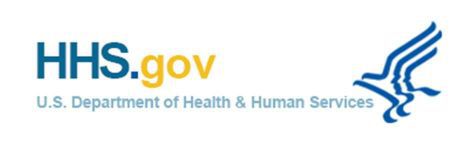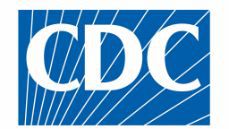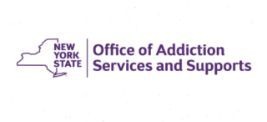Topics
Understanding Addiction
PREVENTING ADDICTION IN OSSINING

Of the estimated 21 million Americans suffering from addiction, only 10%
receive any treatment. But not only is addiction treatable, it’s preventable.
Ossining Communities that Care partners with many other organizations in the community to help children and teens avoid addiction by resisting the pressures that lead to initial substance use. We address individual, school, family, and community factors that matter to our youth, empowering them to make healthy and informed decisions.
Together, we:
- Create opportunities for personal growth and success in academics and good decision-making.
- Support physical and mental health by providing kids with information and resources to recognize and respond to stressful or potentially harmful situations.
- Empower parents with research-based guidance on how to help their kids resist substance use and other unhealthy behaviors.
- Inform communities with accurate information that counteracts marketing of harmful substances – especially deceptive messages directed at young people.
ADDICTION IS A MEDICAL CONDITION
Key to addressing addiction and the disruption it can cause is understanding that it’s a disease. Like many other chronic health conditions, addiction affects the brain: its structure, its sensitivity to perceptions and to various chemical messengers, and its overall activity and function. Addiction is a medical condition, not a moral failing.
Addiction can be treated, but it’s a complicated process and it can take a long time for people to stop using for good. Different people need different treatments depending on their individual situations, and many people do not seek or receive treatment for a variety of factors related to individual health, financial barriers, family and community pressures, and resource availability. However, several approaches have worked including:
How Does Addiction Work?
Severe Substance Use Disorder, or addiction, is defined by compulsive or uncontrolled use of a substance. The condition is considered chronic, as someone who has an addiction may have a relapse or recurrence of their substance use.
Addictive substances rewire the brain, causing those with an addiction to seek out and use the addictive substance again and again, even though they may be experiencing serious harm. These changes can persist long after substance use has stopped.
Certain factors can affect the risk of addiction, including the strength of a family support system and social/community network, genetic and other biological factors, and personal history of past substance use.
SOURCE: US Surgeon General
Resources
Grown Ups Show Up
Here’s how to start an open and honest dialogue about addiction.
Kitchen Table Toolkit
English toolkit
Spanish Toolkit
COMMONLY ABUSED & ADDICTIVE DRUGS
ALCOHOL
Alcohol is one of the oldest—if not the oldest—addictive drugs around. It’s also widely available, which is one of the reasons it’s one of the most common substance for people to become addicted to.
NICOTINE/VAPING/SMOKING
Nicotine is one of the most highly addictive substances we know of, and like alcohol it is widely available. Even a few small puffs on a vape or a cigarette can lead to cravings to feel nicotine’s effects again, yet those effects quickly diminish with regular use. This traps users very quickly in the cycle of addiction.
MARIJUANA
Some people claim that marijuana is non-addictive. The fact is, marijuana ranks a close third to alcohol and nicotine for the drug at the heart of the most addictions in the United States. Marijuana’s effects on both the body and the brain—especially the teenage brain—give it a high risk of triggering addiction.
OPIOIDS & PRESCRIPTION DRUGS
Certain prescription drugs—including oxycodone (OxyContin®), hydrocodone (Vicodin®), codeine and morphine—carry a high risk of addiction, and should only be used under the supervision of a medical professional, strictly as directed. These opioids are chemically similar to heroin, which (like morphine and codeine) is a naturally occurring opiate, and is also highly addictive. Other prescription drugs, including benzodiazepines (e.g. Xanax®) and amphetamines (e.g. Adderall®) can also lead to addiction if used outside a medical professional’s directions and supervision.
AMPHETAMINES & STIMULANTS
Cocaine and other amphetamines, as well as other stimulants like methamphetamine, have certain chemically similarities to nicotine—one of the most addictive substances around. Amphetamines and methamphetamines trigger addictions almost as rapidly using the same mechanisms in the brain, meaning just a single use could lead to an addiction. These drugs can also have far more rapid effects on health and behavior than nicotine, making addiction more risky.
SOURCE: Abovetheinfluence.com

TEEN ADDICTION & TREATMENT
Brains continue to grow and develop until the age of 25. Before then, they are especially sensitive to drugs that interfere with the development process and negative effects can be permanent. Teenagers who use nicotine, marijuana, alcohol, or other drugs are more likely to develop addiction/SUD as adults than are teens who “wait” to experiment until they’re older.
In fact, research shows that most people with addiction began using before they were 18.
The sooner a potential problem is recognized, the easier it is to get the necessary help and prevent or reduce the impact of an addiction. There are many resources for teens and adults suffering from addictions or substance use disorders, many just a click or a phone call away—and available today.
STAGES OF ADDICTION
THE FIRST “EXPERIMENT”
Before addiction or substance use disorder can begin, there has to be an initial exposure to the drug—the first drink, first puff, first try. Though not all experimentation leads to addiction, no addiction occurs without this first use. And because some substances are highly addictive—and some people especially vulnerable to developing addictions—that first use can be enough to put someone on a risky path.
BINGING & INTOXICATION
When there’s enough substance use to lead to intoxication—that is, where brain function is so altered that thinking, learning, memory, judgment, and/or bodily and behavioral control are all impaired—a user may be on the road to addiction.
WITHDRAWAL & NEGATIVE EFFECTS
When someone is used to a drug, he may begin to experience negative effects when he goes without: increased irritability, depression, moodiness, and physical manifestations including nervous tics and fidgeting, for example. These effects may signal withdrawal and in fact may become quite severe. Even if the person does not experience physical withdrawal symptoms, he may feel he needs it to feel good or excited about what he is doing. The person is now desiring the drug and sometimes takes it without intending to, or takes more than intended. Stopping is hard.
CRAVINGS & PREOCCUPATION
Once the symptoms of withdrawal set in, someone suffering from addiction makes access to his drug of choice the top priority in his life. He may rearrange his life to ensure he can use when he wants to, and may act impulsively and destructively to acquire the substance. Even when he is in the midst of using, he may be preoccupied and obsessed with finding his next “fix.”

STEP ZERO: PREVENTING ADDICTION
The easiest way to avoid an addiction is never to have one. Staying at “Step Zero”—preventing addiction altogether—is the healthiest choice you can make. Teens who experiment with substances that affect brain development—including alcohol, marijuana, and nicotine—risk lasting effects including ongoing substance use disorders as adults. Letting your brain develop naturally will keep you healthy now, and help you continue to make healthy choices in the future.
Learn More



